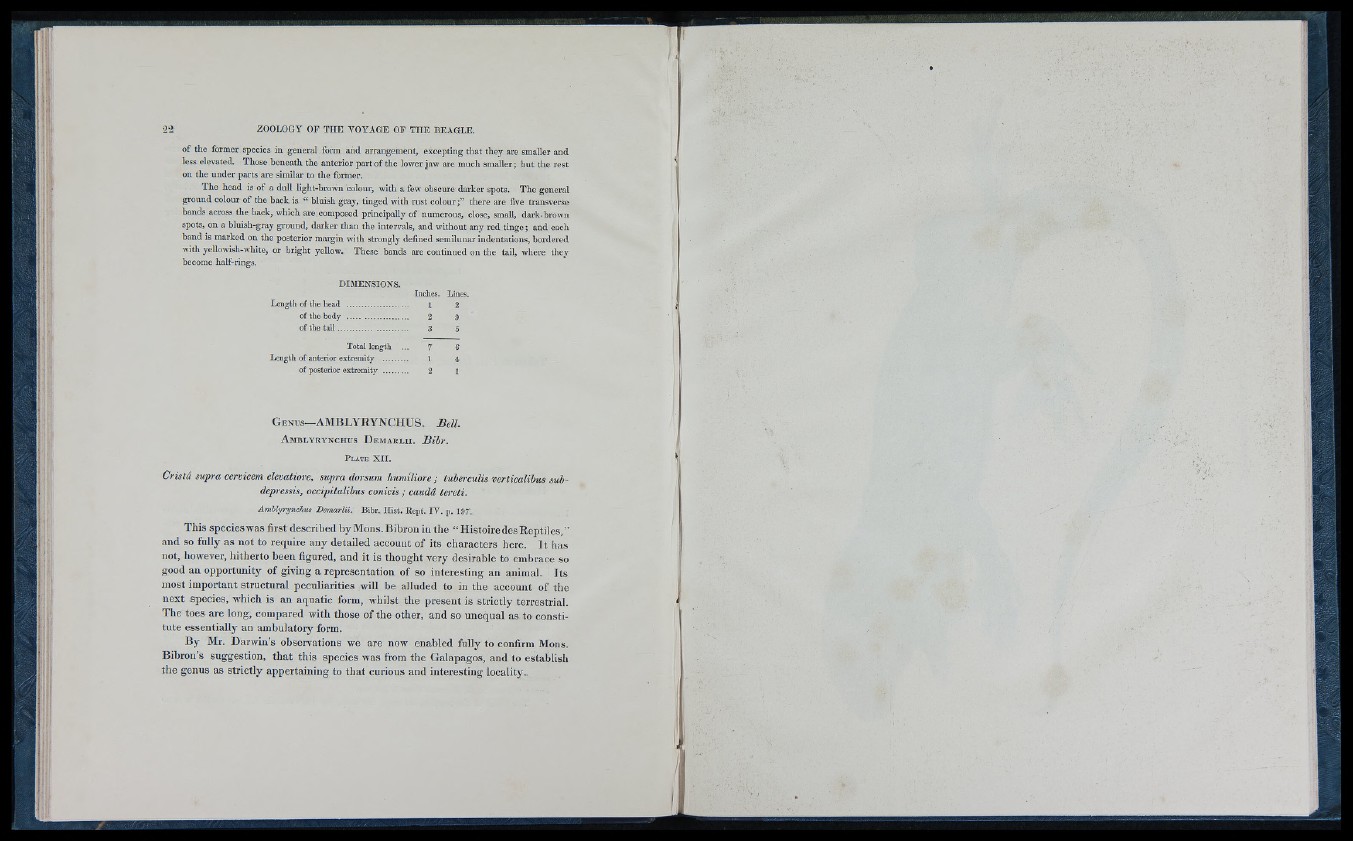
n .
r.
o f tlic forme r species in g en e ral form an d arran g em en t, ex c ep tin g th a t th e y are smaller an d
less elevated. Those b en e a th th e an te rio r p a r t o f th e lower jaw are much sm a lle r; b u t th e re s t
on th e u n d e r p arts are similar to th e former.
T h e h e a d is o f a dull light-brown colour, with a few obscure d a rk e r spots. T h e gene ral
g ro u n d colour o f th e b a c k is “ bluish gray, tin g ed with ru s t c o l o u r t h e r e are five transverse
ban d s across th e back, w h ich are composed prin cip a lly o f numerous, close, small, dark- brown
spots, on a b luish-gray g ro u n d , d a rk e r th a n th e interva ls, a n d w ith o u t an y re d tin g e ; an d each
b an d is m arked on th e p o sterio r m arg in w ith strongly defined sem ilu n ar in d en ta tio n s , b orde red
with yellowish-white, o r b rig h t yellow. T h e se bands are c o n tin u ed o n th e tail, where th ey
become half-rings.
DIMENSIONS.
Inches. Lines.
Length of the head .............................. I 2
of the body .............................. 2 9
of the t a i l .................................. 3 5
Totallength ... 7 6
Length of anterior extremity ............ 1 4
of posterior extremity ............ 2 1
G e n u s— AMBLYRYNCHUS. S e l l
A m b l v e y n c h u s D e m a r l i i . S ib r .
P late X I I.
Crista supra cervicem etevatiore, supra dorsum humiliore ; tuberculis verticalibus sub-
depressis, occipitatibus conicis ; caudd tereti.
Amhlyrynchus Demarlii. Bibr. Hist. Kept. IV . p. 197.
This species was first described by Mons. Bibron in tiie “ HistoiredesReptiies,”
and so fuliy as not to require any detaiied account of its characters iiere. I t has
not, however, hitherto been figured, and it is thought very desirabie to embrace so
good an opportunity of giving a representation of so interesting an animai. Its
most important structurai pecuiiarities wili be aiiuded to in the account of the
next species, which is an aquatic form, whiist the present is strictiy terrestriai.
The toes are iong, compared with those of the other, and so unequal as to constitute
essentially an ambulatory form.
By Mr. Darwin’s observations we are now enabled fully to confirm Mons.
Bibron’s suggestion, th a t this species was from the Galapagos, and to establisli
the genus as strictly appertaining to th a t curious and interesting locality.